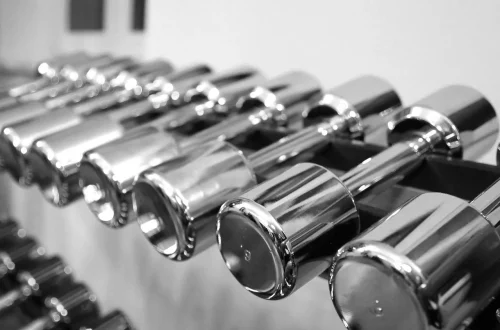
Real vs Fake Boobs: Understanding the Differences and Implications
The perception of beauty has evolved significantly over the years, influenced by cultural trends, media portrayals, and personal preferences. Among the many aspects of beauty that have garnered attention, breast appearance stands out as a topic of both fascination and debate. The distinction between natural and augmented breasts often sparks conversations about body image, self-esteem, and societal expectations.
As women navigate the complex landscape of personal aesthetics, they may find themselves confronted with questions about what constitutes beauty and how it aligns with their own identity. The choice between embracing one’s natural form or opting for surgical enhancement is deeply personal and can be influenced by a myriad of factors including cultural standards, personal experiences, and peer pressure.
This discussion is not merely superficial; it delves into the emotional and psychological implications of body image. Understanding the differences between real and fake breasts is essential for fostering a healthy dialogue about self-acceptance and the pressures faced by individuals in today’s society. As we explore this topic, it’s important to recognize the multifaceted nature of beauty and how it is perceived, celebrated, or criticized in various contexts.
Natural Breasts: Characteristics and Perceptions
Natural breasts, often referred to as “real” breasts, are defined by their organic formation and the physiological processes that govern their development. Typically composed of glandular tissue and fat, natural breasts can vary widely in size, shape, and texture. Factors such as genetics, age, hormonal changes, and lifestyle choices play significant roles in the appearance of natural breasts.
From a biological perspective, natural breasts are designed for lactation, containing milk-producing glands that are activated during pregnancy and breastfeeding. The size and shape of breasts can change throughout a woman’s life, influenced by factors such as weight fluctuations, hormonal changes during menstruation, and the effects of aging.
Culturally, natural breasts have often been celebrated in different contexts, symbolizing femininity and nurturing. However, societal standards of beauty have led to varying perceptions of what is considered attractive. In some cultures, larger breasts are seen as desirable, while in others, smaller or more modestly sized breasts are preferred. These conflicting ideals can create pressure on women to conform to certain beauty standards, leading to insecurities about their natural bodies.
Moreover, discussions around body positivity have gained momentum in recent years, encouraging women to embrace their natural forms. Movements that promote self-acceptance highlight the beauty of diversity in body shapes and sizes, fostering a more inclusive understanding of attractiveness. While there is still a long way to go in challenging traditional beauty norms, the growing emphasis on self-love and authenticity is reshaping the narrative around natural breasts.
Ultimately, the appreciation of natural breasts goes beyond mere aesthetics. It encompasses a broader understanding of body image, self-worth, and the importance of celebrating individuality. By acknowledging the unique characteristics of natural breasts, society can move toward a more inclusive and accepting view of beauty.
Augmented Breasts: The Rise of Cosmetic Surgery
In contrast to natural breasts, augmented breasts are the result of surgical enhancement, commonly performed through breast augmentation procedures. This practice involves the insertion of implants to increase breast size or alter their shape, catering to individual desires for a fuller or more symmetrical appearance. The rise of cosmetic surgery has transformed the beauty landscape, allowing women to take control of their bodies in ways that were previously unattainable.
Breast augmentation can serve various purposes, from enhancing self-esteem to reconstructing breasts after surgery due to health issues. The advancements in medical technology have improved the safety and effectiveness of these procedures, leading to a surge in popularity. Women across various demographics are increasingly opting for augmentation, driven by personal motivations or societal pressures to conform to certain beauty ideals.
The implications of choosing augmented breasts extend beyond physical appearance. Many women report enhanced confidence and empowerment after undergoing the procedure, feeling more aligned with their self-image. However, it is essential to acknowledge the potential risks associated with cosmetic surgery, including complications and the need for future surgeries to maintain or adjust the implants.
Culturally, the perception of augmented breasts varies widely. Some view them as symbols of empowerment and personal choice, while others criticize them as indicative of societal pressures to conform to unrealistic beauty standards. The media often plays a significant role in shaping these perceptions, showcasing celebrities and influencers who have undergone breast enhancement, thereby influencing public opinions.
Despite the positive aspects associated with breast augmentation, it is crucial for individuals to make informed decisions about their bodies. Engaging in thorough research, consulting with medical professionals, and considering personal motivations are essential steps before undergoing any cosmetic procedure. In a world where beauty standards are constantly shifting, understanding the implications of breast augmentation can help individuals navigate their choices with confidence and awareness.
The Emotional and Psychological Impact of Breast Appearance
The impact of breast appearance on emotional and psychological well-being is profound and cannot be overlooked. Both natural and augmented breasts carry significant weight in how individuals perceive themselves and how they believe others perceive them. Issues surrounding body image, self-esteem, and societal expectations can lead to a complex relationship with one’s own body.
For many women, the desire for a certain breast size or shape can stem from external influences, including media representation and cultural norms. The portrayal of idealized bodies in advertising, film, and social media can create unrealistic standards that women feel pressured to meet. This pressure can lead to feelings of inadequacy, anxiety, and even depression, particularly if individuals struggle to achieve the desired appearance.
Conversely, women who embrace their natural breasts often report a sense of liberation and self-acceptance. Movements promoting body positivity encourage women to appreciate their bodies for what they are, rather than what society dictates they should be. This shift in perspective can foster a healthier relationship with one’s body, promoting self-love and acceptance.
On the other hand, the decision to undergo breast augmentation may provide a psychological boost for some women. The enhancement can lead to increased confidence and a more positive self-image, particularly if the individual has long felt dissatisfied with their breast appearance. However, it’s essential for individuals to ensure that their motivations for surgery are rooted in personal desires rather than societal pressures.
Ultimately, the emotional and psychological ramifications of breast appearance underscore the importance of fostering healthy discussions around body image. Encouraging open dialogues about the challenges and triumphs associated with both natural and augmented breasts can help individuals navigate their feelings and choices with greater clarity.
Making Informed Choices: Navigating the Decision Between Real and Fake
Navigating the choice between natural and augmented breasts is a deeply personal journey that reflects individual values, beliefs, and circumstances. Whether one opts for breast augmentation or embraces their natural form, making informed choices is paramount. This process involves self-reflection, research, and consultation with medical professionals to understand the implications of each option.
For those considering breast augmentation, it is crucial to explore the various types of implants available, as well as the procedures involved. Understanding the potential risks, benefits, and long-term commitments associated with the surgery can empower individuals to make choices that align with their goals. Additionally, seeking advice from certified plastic surgeons and connecting with others who have undergone similar procedures can provide valuable insights.
On the other hand, individuals who choose to embrace their natural breasts should focus on self-acceptance and body positivity. Engaging with communities that promote diverse body images can foster a sense of belonging and support. Surrounding oneself with positive influences and practicing self-love can help combat the negative feelings that may arise from societal pressures.
Ultimately, the decision between real and fake breasts is not merely about aesthetics; it encompasses a broader understanding of identity, self-worth, and autonomy. By prioritizing informed choices and self-acceptance, individuals can navigate the complexities of body image with confidence and clarity.
**Disclaimer**: This article is for informational purposes only and does not constitute medical advice. For any health-related concerns or questions, please consult a qualified healthcare professional.




